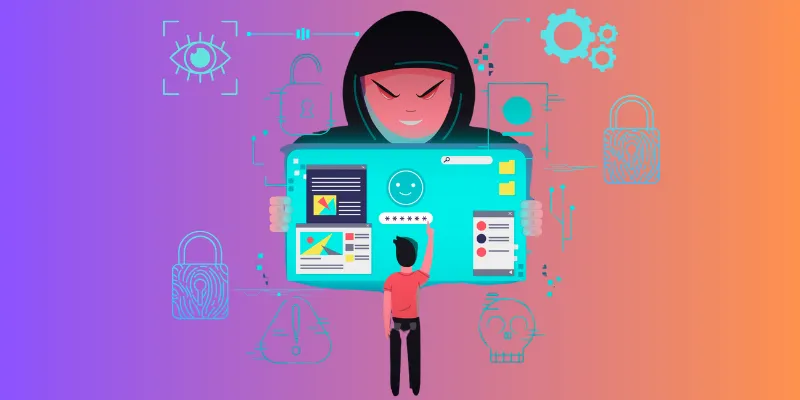
Why Multi-Factor Authentication (MFA) Should Be Non-Negotiable for Small Businesses
If you're a small business owner juggling a dozen priorities, cybersecurity might not be at the top of your list. But here’s a harsh truth: the cybercriminals targeting your business are counting on that.
At qnectU, we’ve seen too many companies assume they’re too small to matter—only to end up paying the price after one employee clicked a phishing email or reused a weak password. That’s why we make Multi-Factor Authentication (MFA) a baseline requirement for every client we work with.
This isn’t just a “nice-to-have” anymore. MFA is one of the most effective (and affordable) ways to secure your business from today’s most common cyber threats.
Let’s walk through what MFA is, why it’s crucial, and how you can implement it without overwhelming your team—or your budget.
What Exactly Is MFA?
MFA requires more than just a password to access an account. It uses at least two of the following:
Something you know (like a password or PIN)
Something you have (like your phone or an authentication token)
Something you are (like your fingerprint or face scan)
By requiring two or more of these factors, MFA makes it significantly harder for attackers to access your systems—even if they manage to steal a password.
Why Small Businesses Need MFA More Than Ever
43% of all cyberattacks now target small and mid-sized businesses. Why? Because most don’t have enterprise-grade security in place—and they’re often easier to exploit.
The average all-in cost of a breach for small businesses? $2.98 million. Not to mention the time, stress, and damage to your reputation.
MFA blocks the vast majority of attacks that rely on stolen passwords, like phishing and credential stuffing. It’s a low-effort, high-impact solution—and it’s quickly becoming a requirement for cyber insurance and vendor contracts.
How MFA Works in Plain English
Let’s break down each layer:
1. Something You Know
Your password or PIN is often the first gatekeeper for your digital accounts—but it’s also the one most easily breached. While it's convenient, it’s vulnerable to a laundry list of attack methods: brute force attacks, phishing emails, social engineering, credential stuffing, and even simple password reuse across platforms. Think of it like using the same key for your house, office, and car—once a hacker has it, they’ve got access to everything. That’s why relying on passwords alone is no longer enough in today’s threat landscape. MFA strengthens this weak link by adding additional verification layers that hackers can’t easily fake or steal.
2. Something You Have
This could be:
A text message or one-time code to your phone
A mobile authenticator app like Duo, Google Authenticator, or Microsoft Authenticator
A physical security token
Even if a hacker has your password, they’d still need access to your device to log in.
3. Something You Are
Biometric security: fingerprint, face scan, or voice recognition. This layer is tied directly to your physical identity—making it the most personal and secure of all. Unlike passwords that can be stolen or phones that can be lost, your biometrics are nearly impossible to duplicate. That’s why high-security environments and modern devices are increasingly relying on biometrics for access. For small businesses, enabling biometric MFA—like fingerprint scans for company devices or facial recognition for app access—can be a game-changer. It adds a powerful barrier without adding complexity, making your security both stronger and more user-friendly.
How to Roll Out MFA the Right Way
Step 1: Start With What Matters Most
Prioritize:
Email platforms (Microsoft 365, Gmail)
Cloud storage (Google Drive, Dropbox, OneDrive)
Banking and finance tools
Remote access platforms (VPN, RDP)
Step 2: Pick the Right Tool
There’s no one-size-fits-all. Some solid options:
Microsoft Authenticator - Our go-to for business MFA
Duo Security – Great for company managed MFA
Google Authenticator – Free and simple
Authy – Cloud backup and multi-device support
Okta or Microsoft Entra ID – For larger or more complex environments
Step 3: Train Your Team
If your people don’t understand why MFA matters, they won’t use it properly. Offer short training, walk-throughs, and documentation.
Need help? We’ve already done this hundreds of times—we’ll make sure your team gets it right.
Step 4: Monitor and Adjust
Security isn’t set-it-and-forget-it. MFA settings and usage need ongoing attention. Review who’s using MFA regularly, audit access logs for any irregularities, and test employee compliance through simulated login or phishing scenarios. Be sure to maintain and securely store backup codes in case users lose access to their MFA device. Consider assigning a dedicated admin to oversee your MFA program, ensure prompt response to lost or stolen devices, and routinely update authentication methods as your business and technology evolve.
Overcoming Common Roadblocks
Pushback from staff? Make it part of your cybersecurity policy.
Can’t afford a full solution? Start with free tools like Microsoft or Google Authenticator.
Remote employees? Use VPNs + MFA.
Device management a mess? That’s where we come in.
MFA Isn’t Just a Tool—It’s a Mindset Shift
This is about protecting the future of your business. One stolen password can lead to a breach, a compliance fine, a lost client contract—or all three.
MFA gives you peace of mind without disrupting your operations. And when implemented the right way, it empowers your team to work securely from anywhere.
If you're ready to tighten up your security, let’s talk. We'll help you pick the right MFA solution, roll it out smoothly, and align it with the rest of your cybersecurity roadmap.
📅 Click here to schedule a quick 26-minute call for your FREE Cyber Risk & Resilience Assessment today.
Article adapted with permission from https://thetechnologypress.com/a-small-business-guide-to-implementing-multi-factor-authentication-mfa/
